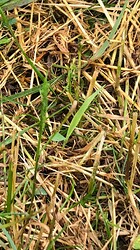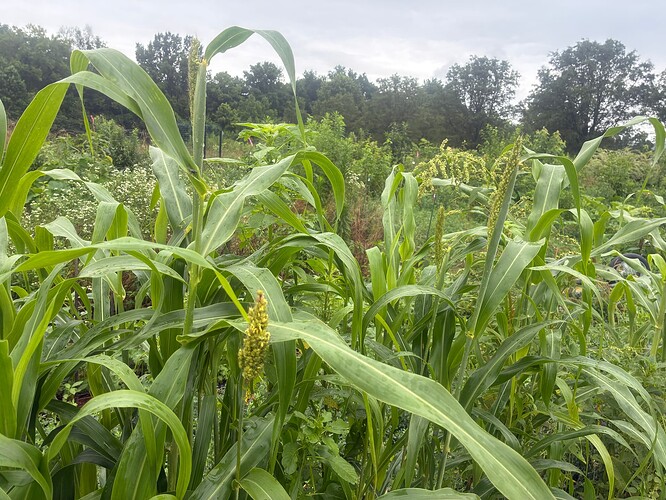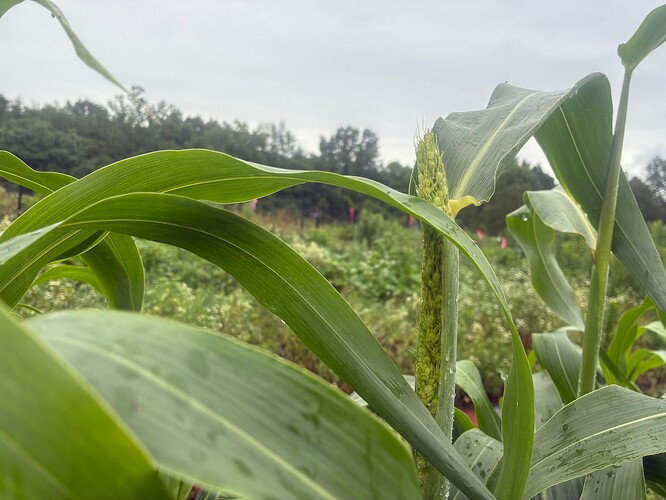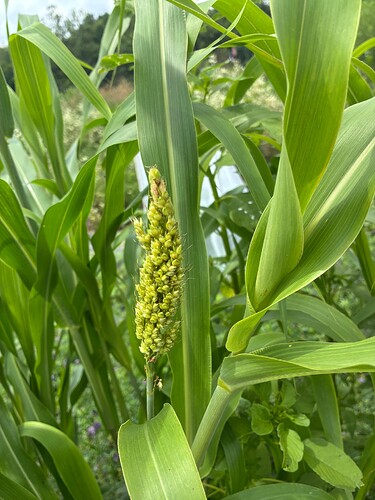I am creating a separate post to document my Sorghum grex experiment.
Starting Varieties:
White Dwarf
Dorado
Korjaj
Maizeña
M61 survivor
Allu Jola
Gaolian Voskovidnyj
Kawanda
Rox Orange
Coral
Gila River Kaña
Texas Black Amber Molasses
Caña Ganchado
Apache Red “Sugarcane”
Mountain Pima
Tasagui
Ba Ye Qi
Honey Drip
Sugar Drip
Mennonite
Tarahumara
Dale
I’d like to grow the sorghum for seeds (popping and flour), syrup (especially if the syrup leaks from the stalk, as I can get my bees to harvest it for me), and also for biomass.
The experiment is to figure out: 1) what is the least amount of protection I have to provide from deer (as I have a fenced-in area, but that is prime real estate, I would rather grow it outside the fenced-in area) and 2) what is the least amount of work I have to do for it to grow.
So, in 2025, I am growing sorghum under different starting conditions (but all sowing was done during/before a 5-day rainy week 4/28-05/01):
Outside fence in dry garden:
- seeds cast in the weeds, weeds mowed down with grass mower, nothing else till harvest
- weed barrier down in the fall, removed before planting, seeds planted, nothing else till harvest
- (2) and seeds covered with weeds/grass to help moisture till germination
Inside fence in dry garden:
4) (2) but inside fence
5) (3) but inside fence
6) manure dug under in the fall and (5)
7) bales of hay buried in the fall and (5)
Home garden:
8) Seeds cast in a nicely aerated bed of leaf mulch compost, slightly covered by a light sprinkling of evenly spaced hay which was hand selected by French maidens. Electric fence low to the ground to discourage bunny activities. Watered as needed and if necessary, I will sing lullaby songs to them in the evening.
Needless to say, I hope (1) is a success for all sorghum (or at least for one syrup sorghum and one grain sorghum), so I won’t have to do 2-8 going forward.
Status 5/11:
Rox Orange (starting condition 8) and Gaolian Voskovidnyj (starting condition 6) are popping, there are some signs of single sorghum seedlings popping, but hard to tell if a single seedling is sorghum or some random grass that happened to pop up.
Maarten




































